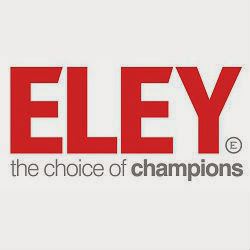Industry Ammunition Founded 1820 Type Public company | Fate Acquired Headquarters London Successor Alfred Nobel | |
 | ||
Products firearms cartridges, percussion caps, smokeless powder Founders Charles Eley, William Eley Profiles | ||
Meet the eley brothers company overview
Eley Brothers were a manufacturer of firearms cartridges at the Eley's Cartridge Factory, located in Edmonton and bordered by the River Lee Navigation and the Great Eastern Railway at Angel Road.
Contents
- Meet the eley brothers company overview
- History
- As trade name
- Recent history
- Ammunition developed by Eley Brothers
- Literature
- References
History
It was founded by Charles and William Eley in London in the 1820s. The Eley Brothers purchased the patent rights to the "wire cartridge" in the spring or early summer of 1828. The patent for “wire cartridge” was issued by the English Patent Office on 28 November 1827 to Joshua Jenour under Patent No. 5570. Mr. Jenour had been born in Fleet Street, London in 1755 and had previously been the owner and manager of the Daily Advertiser, a London newspaper. The 'wire cartridge' consisted of a wire cage which held the shot together during the first stages of its flight.
In 1828 Charles and William Eley established a factory in Charlotte Street (London), later moving to Bond Street (London). Initially, Charles Eley had been the primary owner of the concern and the original wire cartridges had only the name of Charles Eley on them. The initial attempts to sell the Eley Wire Cartridge went poorly and Charles Eley withdrew from the business. During the mid-1830s, William Eley reinvigorated the company and began sell the "Improved Patent Wire Cartridges".
In 1837 the company added percussion caps to their range and though William was killed in an explosion in 1841, his three sons helped carry on the business. His eldest son William Thomas forged an alliance with Samuel Colt, the two patenting a skin cartridge for use in the latter's revolvers.
The growth of business accompanied by moves to the Grays Inn Road in 1864, and by the development of the Boxer cartridge designed by Colonel Boxer - Chief Superintendent of the Royal Arsenal, Woolwich - and adopted by the government in 1866.
In 1874 they went public to fuel expansion, but lost momentum after 1881 when William Thomas died. His brothers remained in control until 1901 but shareholders accused them of running it as a private company. Nevertheless, innovations included smokeless powder, and in the 1890s, 400 types of cartridges were produced. They had established a factory at Tile Kiln Lane, Edmonton, London by 1865.
In 1894 the company transferred production to enlarged premises at Angel Road which included a tramway to its wharf on the nearby River Lee. Twice the War Office removed the company from their Approved List of suppliers due to poor quality .303 British ammunition, much of it returned from abroad as unusable. Moreover, poor facilities meant the company had to buy in components, unlike their competitors.
In 1900 an explosion killed two workmen, the directors squabbled amongst themselves, and in 1906 the mostly female workforce went on strike when their wages were cut. A leading ballistics expert F W Jones, was brought in to improve matters and in 1907 a 107 ft shot tower was built. The factory was ill adapted to mass production - it produced 209 million .303 cartridges in World War I compared with 2,373 million at Kynochs, Birmingham factory - but its specialised skills made it ideal for innovation, such as the preparations of munitions for aircraft.
After the war, Eley's, along with other firms, became part of Explosive Trades Ltd, soon part of Nobel Industries. Many Belgians had been billeted in Edmonton as refugees and many, as elsewhere, worked in the armaments industry. This led to natural links between the two countries, and in the 1920s Eley's went into partnership with Fabrique Nationale (FN), buying out the Belgian firm of Cartoucherie Russo - Belge. However, the need for ammunition had slumped, and the Angel Road factory closed in 1921, all production being transferred to Nobel's factory in Waltham Abbey.
As trade name
The name Eley persists as a brand name for gun cartridges, and in recent years for corrosion-proof-coated lead shot to fill scuba divers' shot belts.
Recent history
The shot tower was demolished in the late 20th century. The area today is known as the Eley Industrial Estate.
Eley Limited was brought by IMI industries and operated within IMI until 2014 when it was brought out by an investment company backed by Lloyds TSB. Eley Limited is now located in Sutton Coldfield, Birmingham, England.
